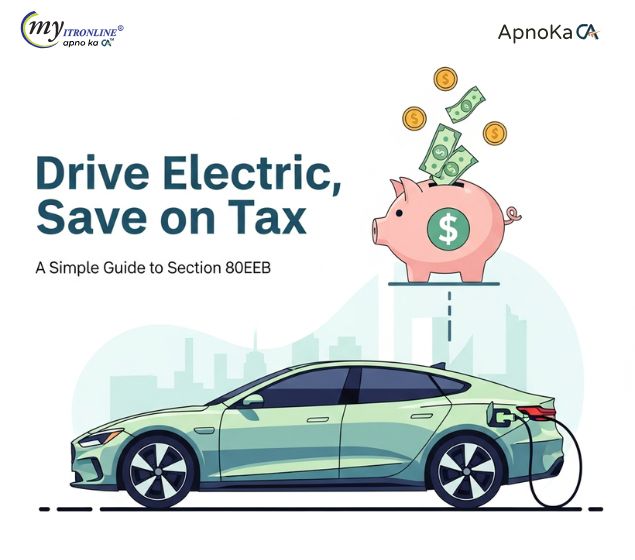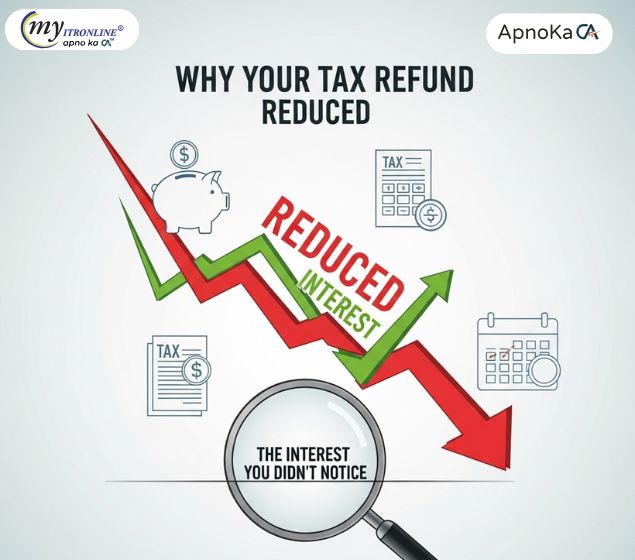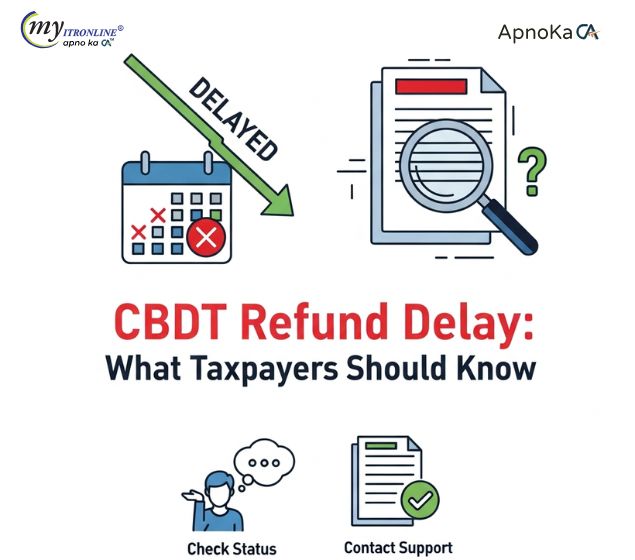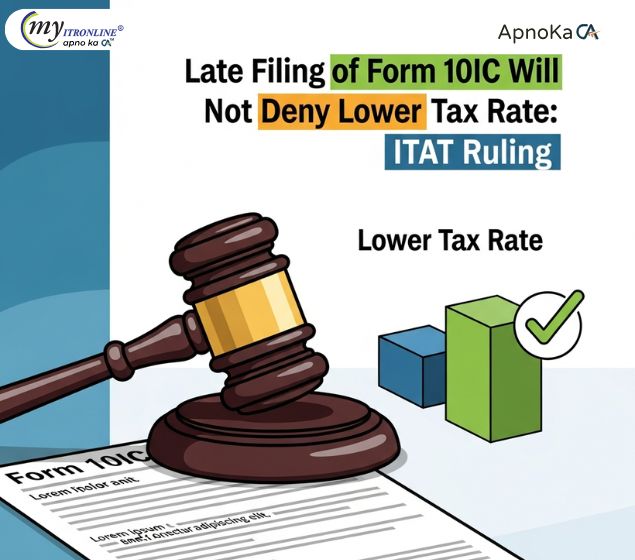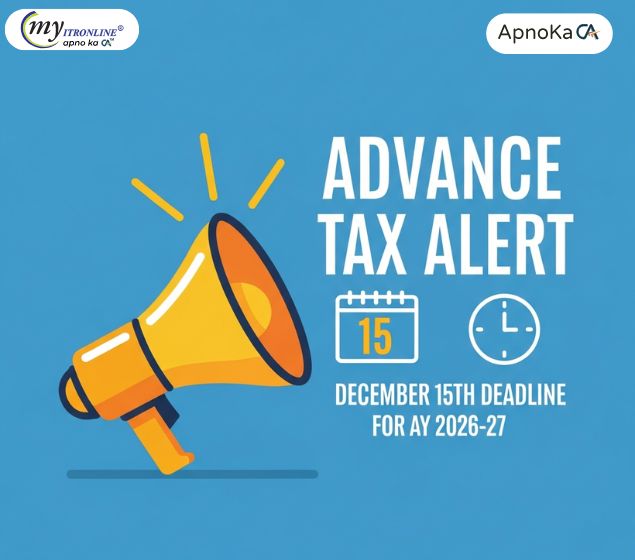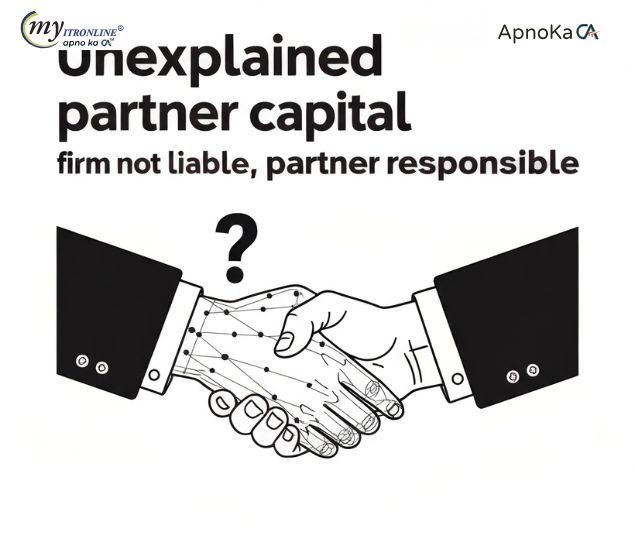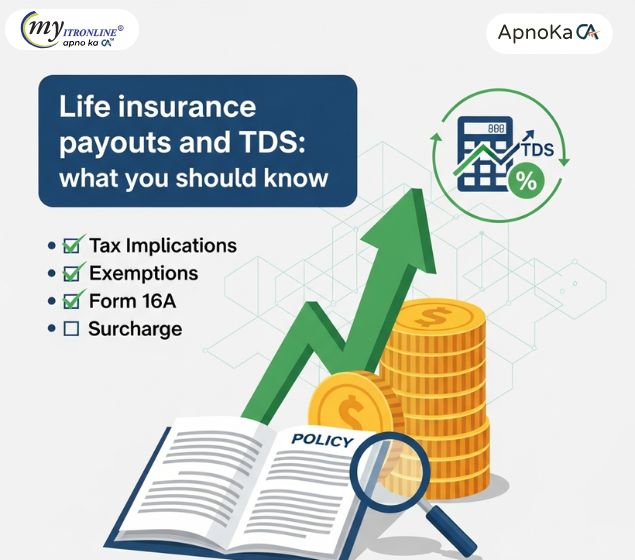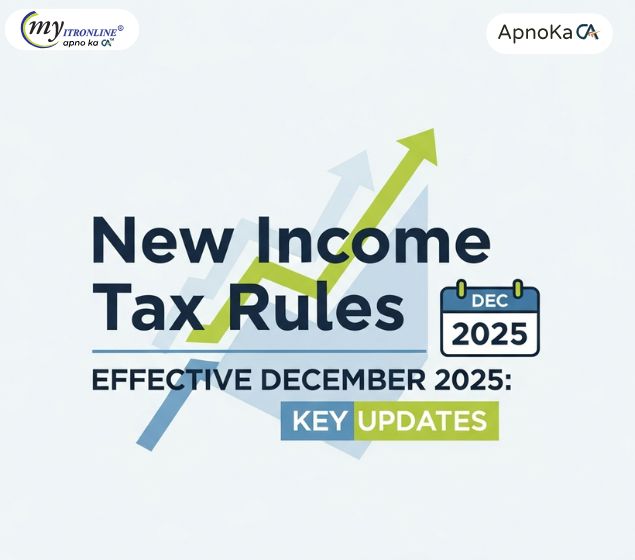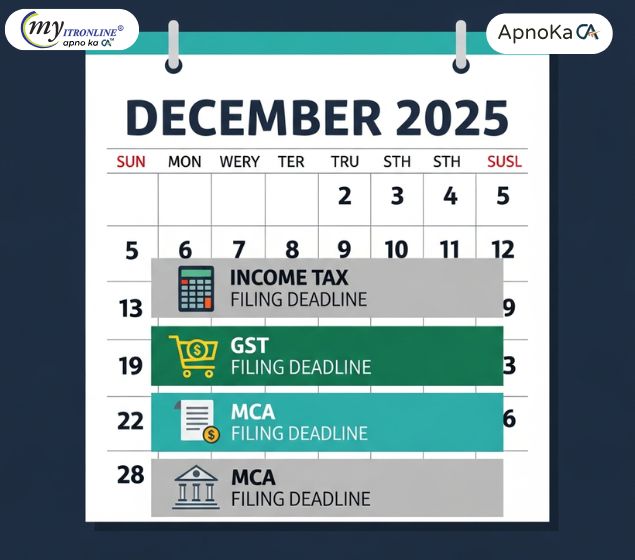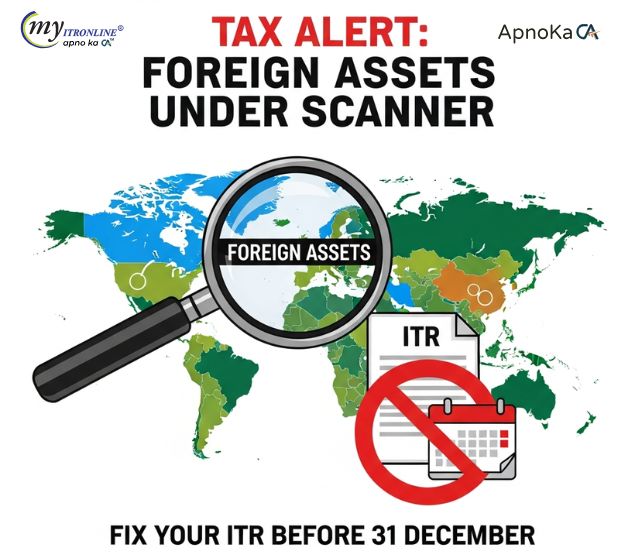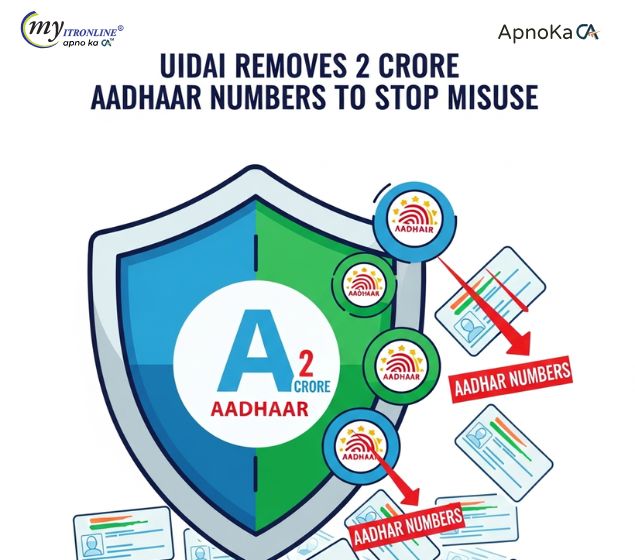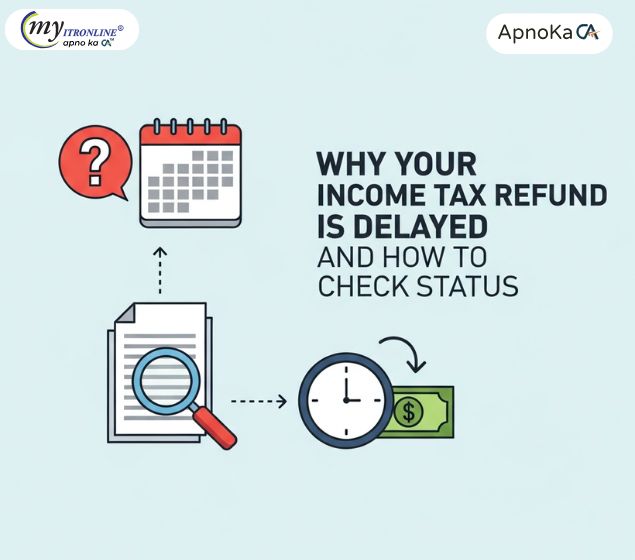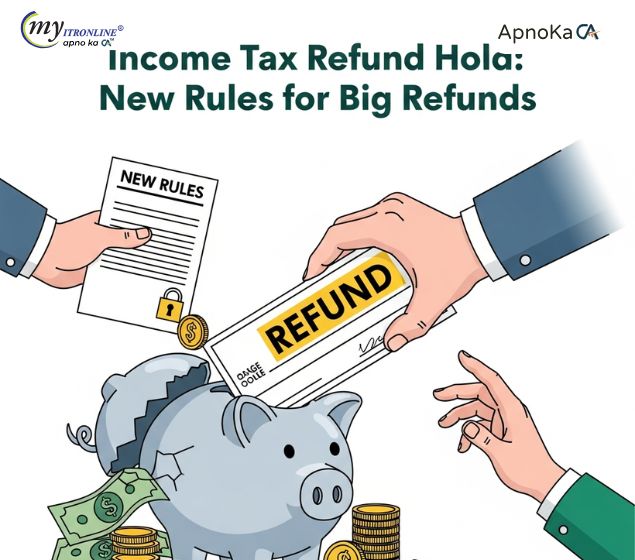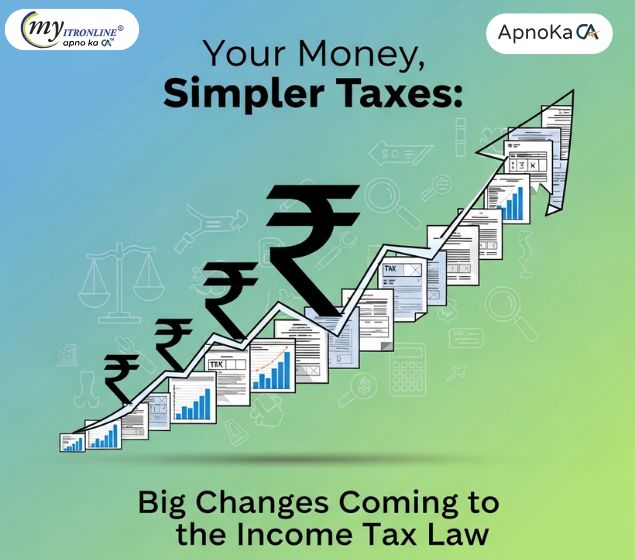ITR Forms AY 2025-26: Salaried, Business, Capital Gains - Find Your Match
This guide makes it easier to choose the right Income Tax Return (ITR) form for Assessment Year (AY) 2025-26 (Financial Year 2024-25). It explains each ITR form (ITR-1 Sahaj, ITR-2, ITR-3, ITR-4 Sugam, ITR-5, ITR-6, ITR-7) by outlining who can use each one, who cannot, and the specific income sources or taxpayer categories they cover. The guide also notes important updates for AY 2025-26, including the inclusion of certain LTCG in ITR-1 and ITR-4, changes in VDA reporting, updated capital gains segregation, higher thresholds for asset and liability reporting, and required deduction disclosures. The purpose is to help individuals and entities choose the right form for accurate and compliant tax filing.
.jpg )
Tax season can often feel like navigating a maze, especially when it comes to choosing the right Income Tax Return (ITR) form. For Assessment Year (AY) 2025-26, which corresponds to Financial Year 2024-25, the Income Tax Department has released various forms. Each one is tailored to different categories of taxpayers and income sources. Picking the correct form is essential to avoid mistakes, delays, and possible notices from the tax authorities.
This guide will help you understand the details of each ITR form and make it easier to choose the one that best fits your financial situation for AY 2025-26.
Key Considerations Before Choosing Your ITR Form
Before we get into the specifics of each form, here are some important factors to consider:
- Your Residential Status: Are you a Resident, Non-Resident (NRI), or Resident But Not Ordinarily Resident (RNOR)? This is a key factor.
- Source of Income: Do you earn income from salary, house property, capital gains, business or profession, or other sources like interest, dividends, or lottery winnings?
- Total Income: The total amount of your income matters a lot, especially for ITR-1 and ITR-4.
- Nature of Business or Profession: If you have business or professional income, are you using the presumptive taxation scheme?
- Foreign Assets or Income: Do you own any assets outside India or receive income from foreign sources?
- Directorship in a Company or Unlisted Equity Shares: If you are a director in a company or own unlisted equity shares, simpler forms may not be suitable.
- Brought Forward Losses or Losses to be Carried Forward: This can also affect your choice of ITR form.
The Different ITR Forms for AY 2025-26
Let's break down each ITR form and who should use it:
1. ITR-1 (Sahaj) - The Simplest Form
Who is it for?
ITR-1, also called Sahaj, is for resident individuals with a straightforward income profile.
Eligibility Criteria for AY 2025-26:
- Total income up to ₹50 lakh.
- Income from Salary or Pension.
- Income from one House Property (excluding cases where loss is brought forward).
- Income from Other Sources (like interest from savings accounts, fixed deposits, family pension, and dividends, but excluding lottery winnings or income from Virtual Digital Assets/Crypto).
- Agricultural income up to ₹5,000.
New for AY 2025-26: Individuals can now report Long-Term Capital Gains (LTCG) under Section 112A up to ₹1.25 lakh (from listed equity shares and equity-oriented mutual funds) in ITR-1, provided there are no brought-forward or carry-forward capital losses. This makes it easier for small investors.
Who cannot use ITR-1?
- Individuals with total income exceeding ₹50 lakh.
- Individuals who are directors in a company.
- Individuals who have held any unlisted equity shares during the previous year.
- Individuals who own any asset outside India, have signing authority in an account outside India, or receive income from any source outside India.
- Individuals with income from more than one house property.
- Individuals with business or professional income.
- Individuals with taxable capital gains (other than LTCG under Section 112A up to ₹1.25 lakh).
- Individuals with agricultural income over ₹5,000.
- Individuals for whom TDS has been deducted under section 194N.
- Individuals with deferred tax on ESOPs from an eligible start-up.
- Non-residents (NRIs) and Resident But Not Ordinarily Residents (RNORs) cannot use ITR-1.
2. ITR-2 - For Individuals and HUFs without Business Income
Who is it for?
ITR-2 is for individuals and Hindu Undivided Families (HUFs) who do not have income from "Profits and Gains of Business or Profession."
Eligibility Criteria for AY 2025-26:
- Income from Salary or Pension.
- Income from more than one House Property.
- Income from Capital Gains (both short-term and long-term, including from shares, mutual funds, and property sales, with specific reporting for Virtual Digital Assets like crypto and NFTs).
- Income from Other Sources, including lottery winnings and other legal forms of gambling.
- Agricultural income exceeding ₹5,000.
- Individuals who are directors in a company.
- Individuals who have held any unlisted equity shares during the previous year.
- Individuals with assets outside India, signing authority in an account outside India, or income from any source outside India.
- Resident Not Ordinarily Resident (RNOR) and Non-Resident (NRI) individuals.
New for AY 2025-26: The form now has distinct sections in Schedule-Capital Gain to separate gains realized before and after July 23, 2024, due to Finance Act, 2024 changes. The threshold for reporting assets and liabilities for individuals using ITR-2 has increased to ₹1 crore from ₹50 lakh.
Who cannot use ITR-2?
- Individuals or HUFs who have income from "Profits and Gains of Business or Profession."
3. ITR-3 - For Individuals and HUFs with Business or Professional Income
Who is it for?
ITR-3 is the most comprehensive form for individuals and HUFs who earn income from "Profits and Gains of Business or Profession." This includes individuals running a proprietorship or those earning as partners in a partnership firm (receiving salary, bonus, commission, or remuneration).
Eligibility Criteria for AY 2025-26:
- Income from a proprietary business.
- Income from a profession (e.g., doctors, lawyers, chartered accountants, consultants, freelancers, content creators).
- Income from Salary or Pension.
- Income from House Property, which can be multiple.
- Income from Capital Gains (short-term, long-term, including from Virtual Digital Assets).
- Income from Other Sources, including lottery and racing winnings.
- Individuals who are directors in a company.
- Individuals who have held any unlisted equity shares.
- Individuals with assets outside India or signing authority in an account outside India, or income from any source outside India.
New for AY 2025-26: The threshold for reporting assets and liabilities in Schedule AL has increased to ₹1 crore from ₹50 lakh for individual taxpayers. The form features revised capital gains schedules to separate gains before and after July 23, 2024, and includes provisions for capital losses on share buybacks after October 1, 2024.
Who cannot use ITR-3?
This form is suitable for those with business or professional income, along with most other income sources. However, it's not meant for entities like companies, LLPs, AOPs, BOIs, etc.
4. ITR-4 (Sugam) - For Small Businesses and Professionals Using Presumptive Taxation
Who is it for?
ITR-4, known as Sugam, is a simplified form for resident individuals, HUFs, and firms (other than LLPs) with total income up to ₹50 lakh who choose the presumptive taxation scheme under Sections 44AD, 44ADA, or 44AE of the Income Tax Act.
Eligibility Criteria for AY 2025-26:
- Total income up to ₹50 lakh.
- Income from business calculated on a presumptive basis under Section 44AD (for businesses with turnover up to ₹2 crore, or ₹3 crore if cash receipts are less than 5%).
- Income from profession calculated on a presumptive basis under Section 44ADA (for specified professions with gross receipts up to ₹50 lakh, or ₹75 lakh if cash receipts are less than 5%).
- Income from business of plying, hiring, or leasing goods carriages under Section 44AE.
- Income from Salary or Pension.
- Income from one House Property.
- Income from Other Sources (excluding lottery winnings and Virtual Digital Asset income).
- Agricultural income up to ₹5,000.
New for AY 2025-26: Like ITR-1, ITR-4 now enables reporting of Long-Term Capital Gains (LTCG) under Section 112A up to ₹1.25 lakh (from listed equity shares and equity-oriented mutual funds), provided there are no brought-forward or carry-forward losses.
Who cannot use ITR-4?
- Individuals with total income exceeding ₹50 lakh.
- Individuals who are directors in a company or hold unlisted equity shares.
- Individuals with assets outside India, signing authority in an account outside India, or income from any source outside India.
- Individuals with income from more than one house property.
- Individuals with taxable capital gains (other than LTCG under Section 112A up to ₹1.25 lakh).
- Individuals with agricultural income over ₹5,000.
- Individuals for whom TDS has been deducted under section 194N.
- Individuals with income from Virtual Digital Assets (Crypto, NFTs).
- Resident But Not Ordinarily Residents (RNOR) and non-residents (NRIs) cannot file ITR-4.
- Taxpayers who do not choose the presumptive taxation scheme.
5. ITR-5 - For Firms, LLPs, AOPs, BOIs, etc.
Who is it for?
ITR-5 is for entities other than individuals, HUFs, companies, and those required to file ITR-7.
Eligibility Criteria for AY 2025-26:
- Firms (including partnership firms).
- Limited Liability Partnerships (LLPs).
- Association of Persons (AOPs).
- Body of Individuals (BOIs).
- Artificial Juridical Persons (AJPs).
- Cooperative Societies.
- Local Authorities.
- Estates of Deceased Persons.
- Estates of Insolvent Persons.
- Business Trusts (as defined in Section 139(4E)).
- Investment Funds (as defined in Section 139(4F)).
Who cannot use ITR-5?
- Individuals.
- HUFs.
- Companies.
- Persons required to file returns under Sections 139(4A), 139(4B), 139(4C), or 139(4D) (these fall under ITR-7).
6. ITR-6 - For Companies
Who is it for?
ITR-6 is specifically for companies registered under the Companies Act, 2013, except those claiming exemption under Section 11 (income from property held for charitable or religious purposes).
Eligibility Criteria for AY 2025-26:
- Private limited companies.
- Public limited companies.
- One Person Companies (OPCs).
- Startups and other incorporated entities that do not claim exemption under Section 11.
Who cannot use ITR-6?
- Companies claiming exemption under Section 11 of the Income Tax Act (they must file ITR-7).
7. ITR-7 - For Trusts, Political Parties, Institutions, etc.
Who is it for?
ITR-7 is a specialized form for persons, including companies, required to furnish returns under specific sections of the Income Tax Act related to income from charitable, religious purposes, political parties, and certain institutions.
Eligibility Criteria for AY 2025-26:
- Persons receiving income from property held under trust or other legal obligation for charitable or religious purposes (under Section 139(4A)).
- Political Parties (under Section 139(4B)).
- Scientific Research Associations, News Agencies, Associations or Institutions mentioned in Section 10(23A), Universities, Colleges, or other institutions referred to in Section 10(23C) (under Section 139(4C)).
- Universities or colleges or other institutions mentioned in Section 35(1)(ii) and Section 35(1)(iii) (under Section 139(4D)).
Who cannot use ITR-7?
- Any taxpayer who does not fit into the specific categories mentioned above.
Important Updates for AY 2025-26 Across Forms:
- Mandatory Disclosure for Deductions: For taxpayers choosing the old tax regime and claiming deductions under Sections like 80C, 80D, 80E, etc., now requires more detailed reporting (e.g., nature of investment for 80C, insurer name and policy number for 80D, landlord PAN for HRA if rent exceeds ₹1 lakh).
- TDS Section Codes: Taxpayers now need to specify the section under which TDS was deducted for different income sources (e.g., 192 for salary, 194A for interest).
- Capital Gains Segregation (ITR-2 & ITR-3): Capital gains transactions happening before and after July 23, 2024, must be reported separately due to changes in the Finance Act, 2024.
- Increased Threshold for Asset and Liability Reporting (ITR-2 & ITR-3): The threshold for reporting assets and liabilities in Schedule AL has risen from ₹50 lakh to ₹1 crore for individuals and HUFs.
- Virtual Digital Assets (VDA) Income: There are new reporting rules for income from cryptocurrencies and other VDAs integrated into relevant forms, primarily ITR-2 and ITR-3. ITR-1 and ITR-4 are not generally for VDA income.
- Aadhaar Enrollment ID Removed: Now, only a valid 12-digit Aadhaar Number is accepted.
Conclusion
Choosing the right ITR form for AY 2025-26 is a crucial first step for a smooth tax filing experience. Carefully assess your income sources, total income, residential status, and any special financial transactions. If your income profile is simple, ITR-1 or ITR-4 (if you choose presumptive taxation) might be right for you. For more complex situations, especially those involving capital gains or significant foreign income or assets, you will need ITR-2 or ITR-3. For entities, ITR-5, ITR-6, or ITR-7 will apply based on their legal structure and purpose.
Remember, it’s always a good idea to check the official instructions from the Income Tax Department or consult a tax professional if you're unsure about which form to choose or how to report your income correctly. This will help ensure compliance and avoid potential problems. Happy filing for AY 2025-26!
FILING YOUR INCOME TAX RETURN F.Y 2024-25 (A.Y. 2025-2026) WITH MYITRONLINE
The income tax filing deadline is right around the corner. If you haven’t filed yet, do it today with Myitronline! Avoid last minute rush and file your tax return today on MYITRONLINE in Just 5 mins.(www.myitronline.com)
If you are looking for eCA assistance to file your income tax return/ GST, you can opt for MYITRONLINE eCA assisted plan starting
Upload Salary Individual Form-16
If you have any questions with filing your tax return, please reply to this mail. info@myitronline.com OR call 9971055886,8130309886.
Note-All the aforementioned information in the article is taken from authentic resources and has been published after moderation. Any change in the information other than fact must be believed as a human error. For queries mail us at marketing@myitronline.com
Krishna Gopal Varshney
An editor at apnokacaKrishna Gopal Varshney, Founder & CEO of Myitronline Global Services Private Limited at Delhi. A dedicated and tireless Expert Service Provider for the clients seeking tax filing assistance and all other essential requirements associated with Business/Professional establishment. Connect to us and let us give the Best Support to make you a Success. Visit our website for latest Business News and IT Updates.
Leave a reply
Your email address will not be published. Required fields are marked *Share this article
Krishna Gopal Varshney, Founder & CEO of Myitronline Global Services Private Limited at Delhi. A dedicated and tireless Expert Service Provider for the clients seeking tax filing assistance and all other essential requirements associated with Business/Professional establishment. Connect to us and let us give the Best Support to make you a Success. Visit our website for latest Business News and IT Updates.
View articles








